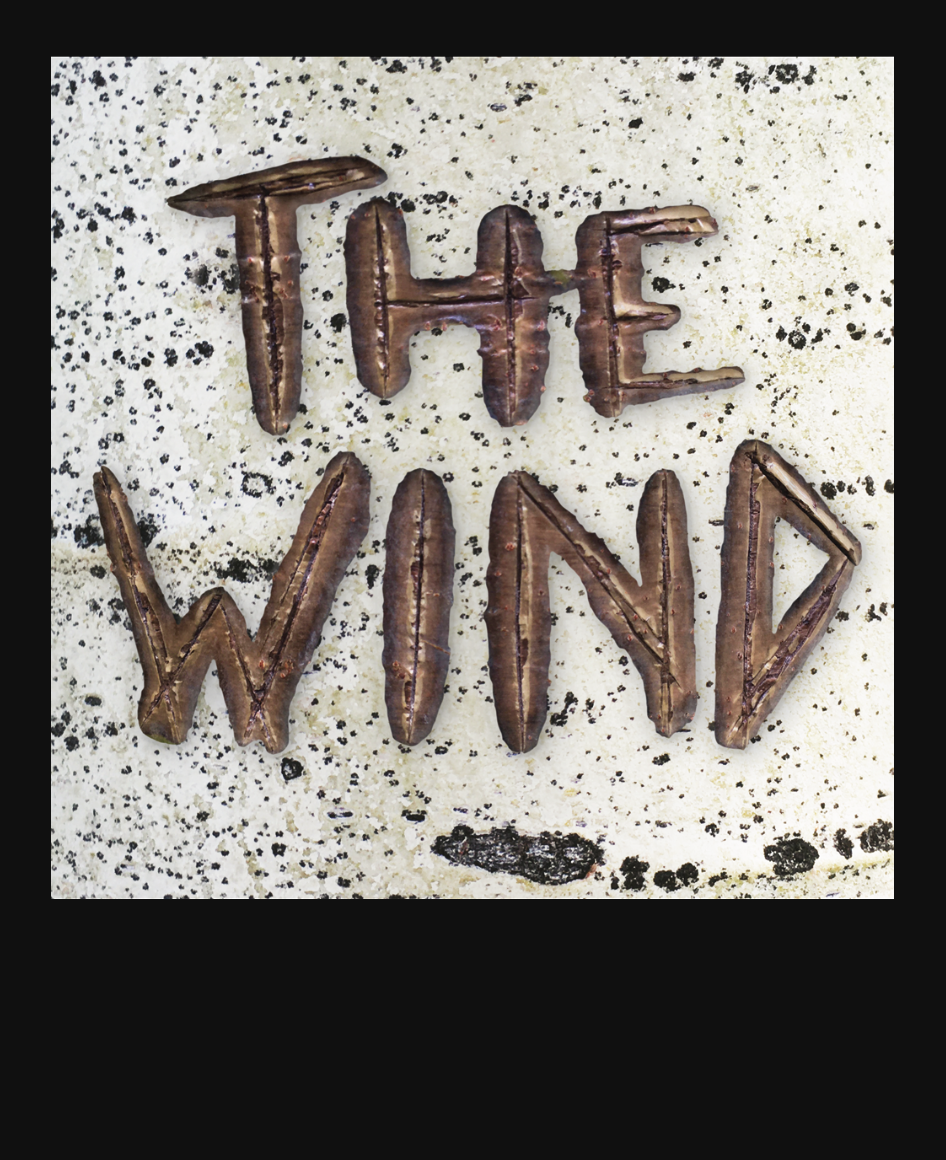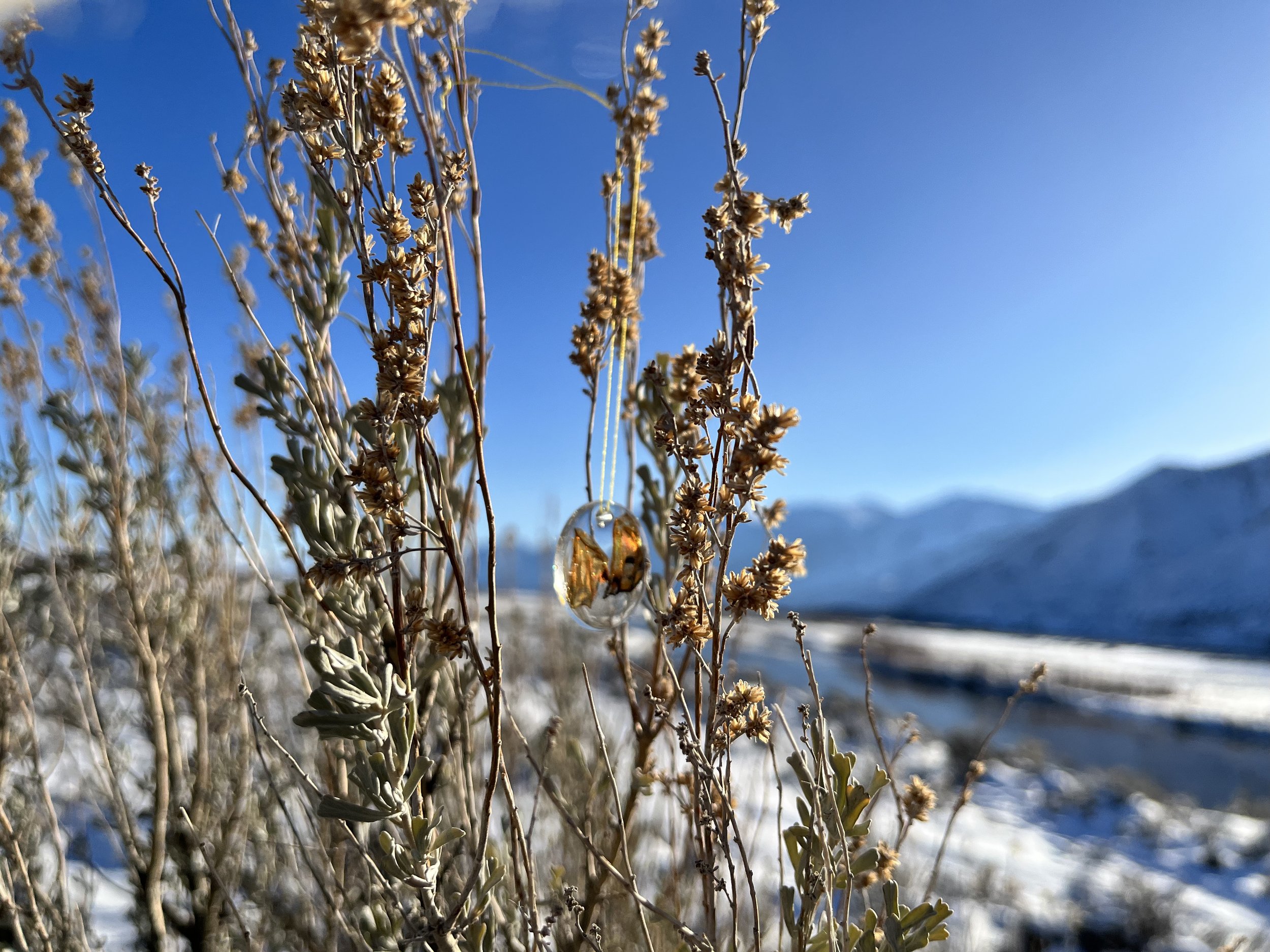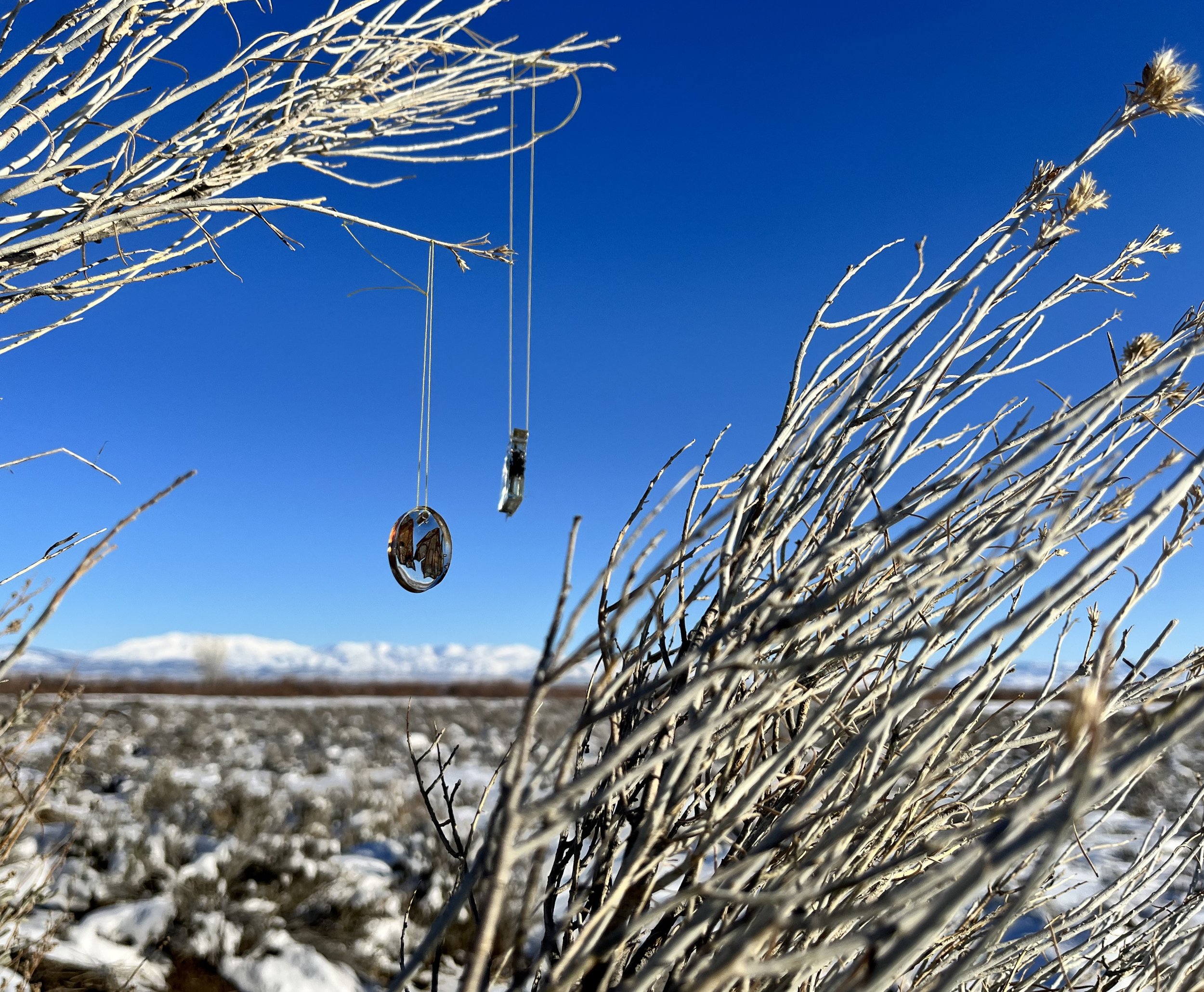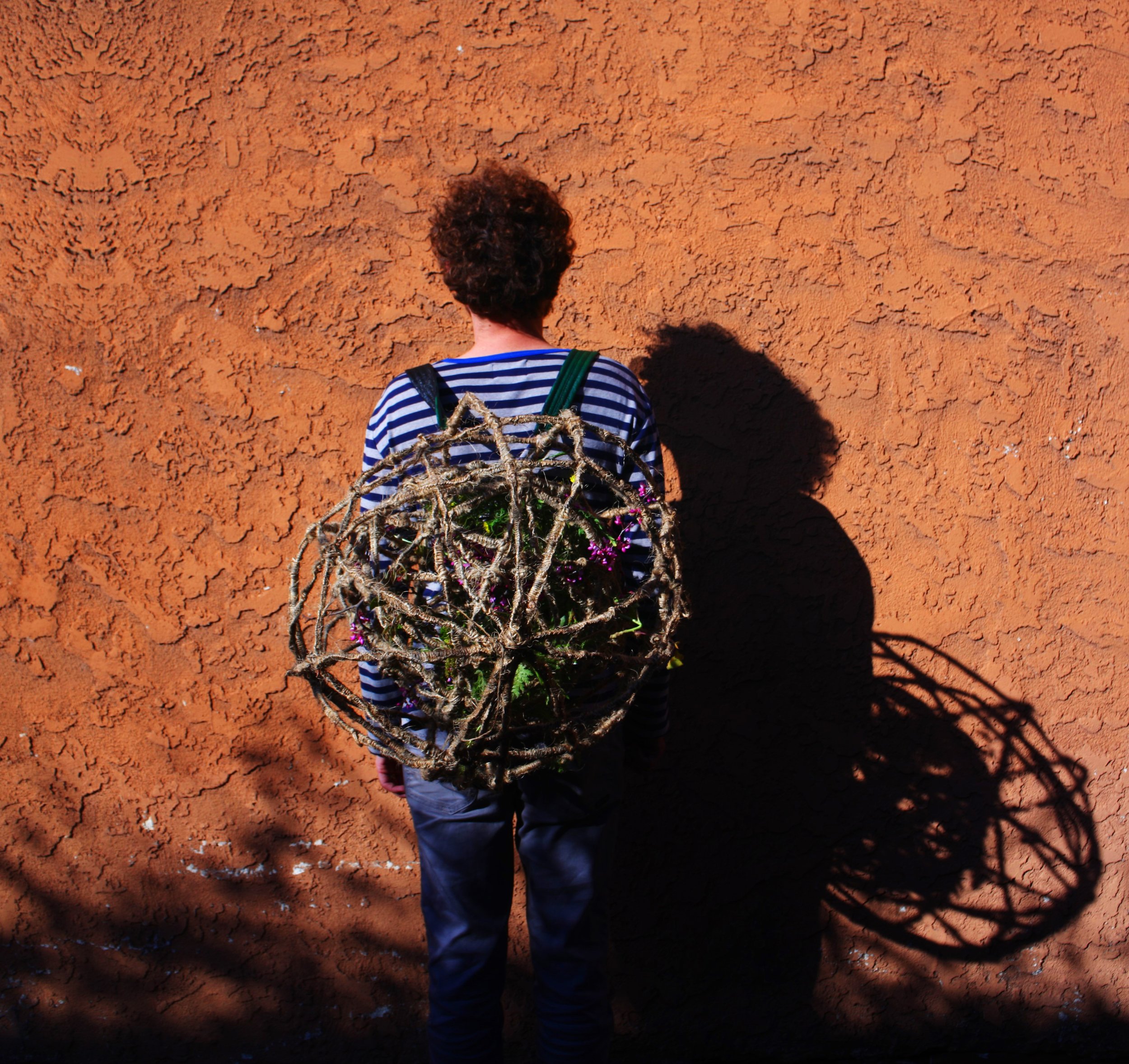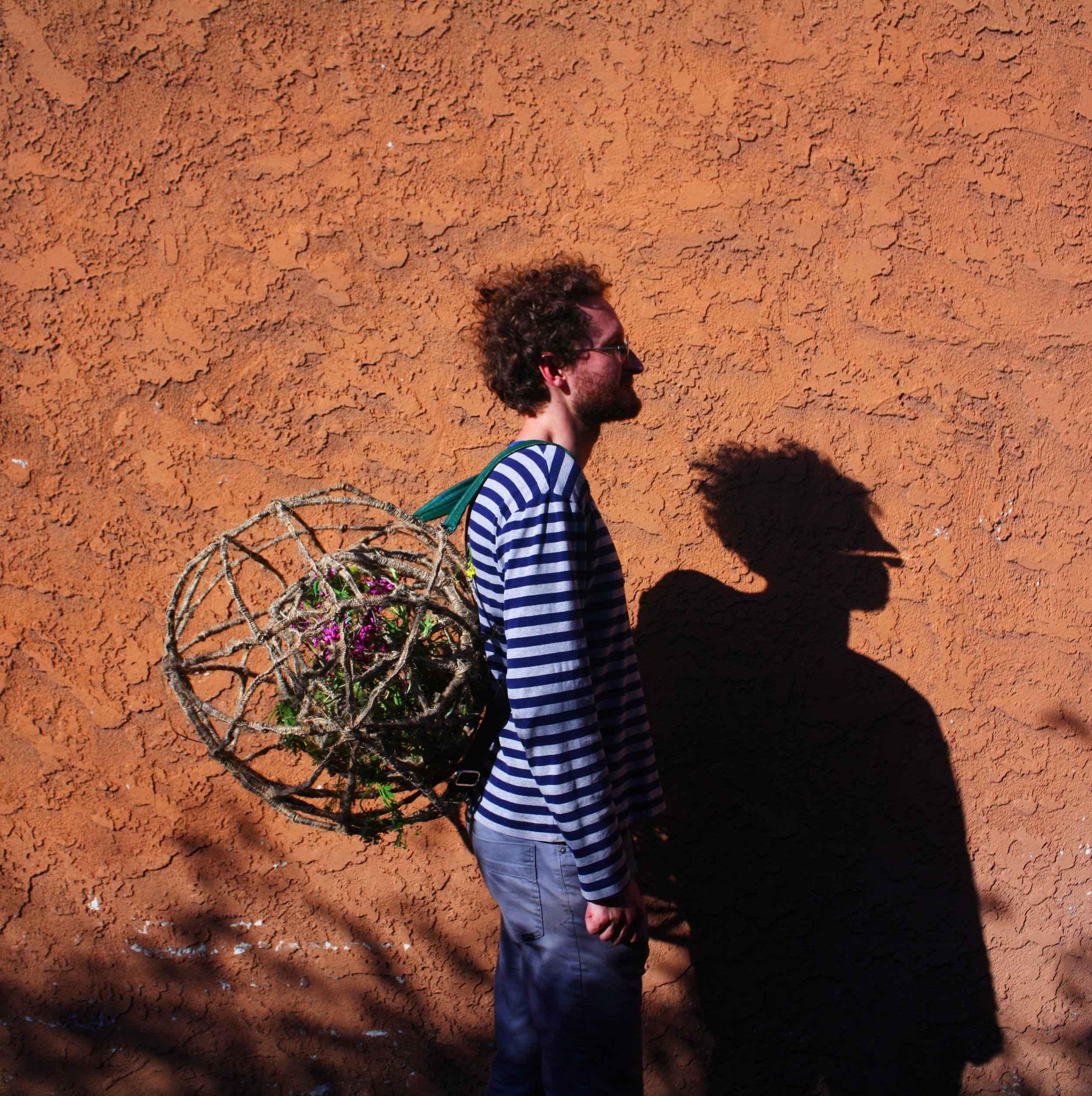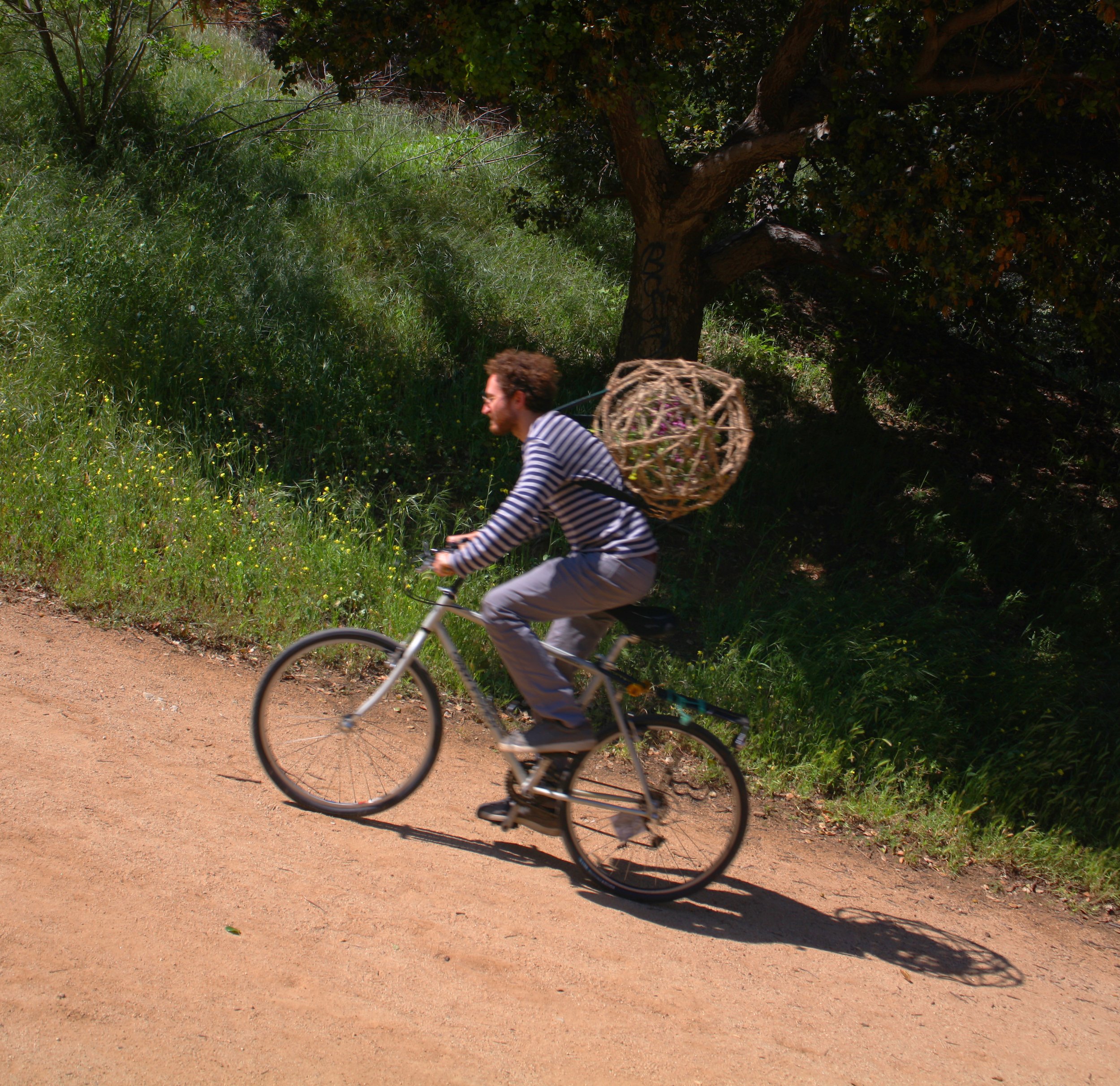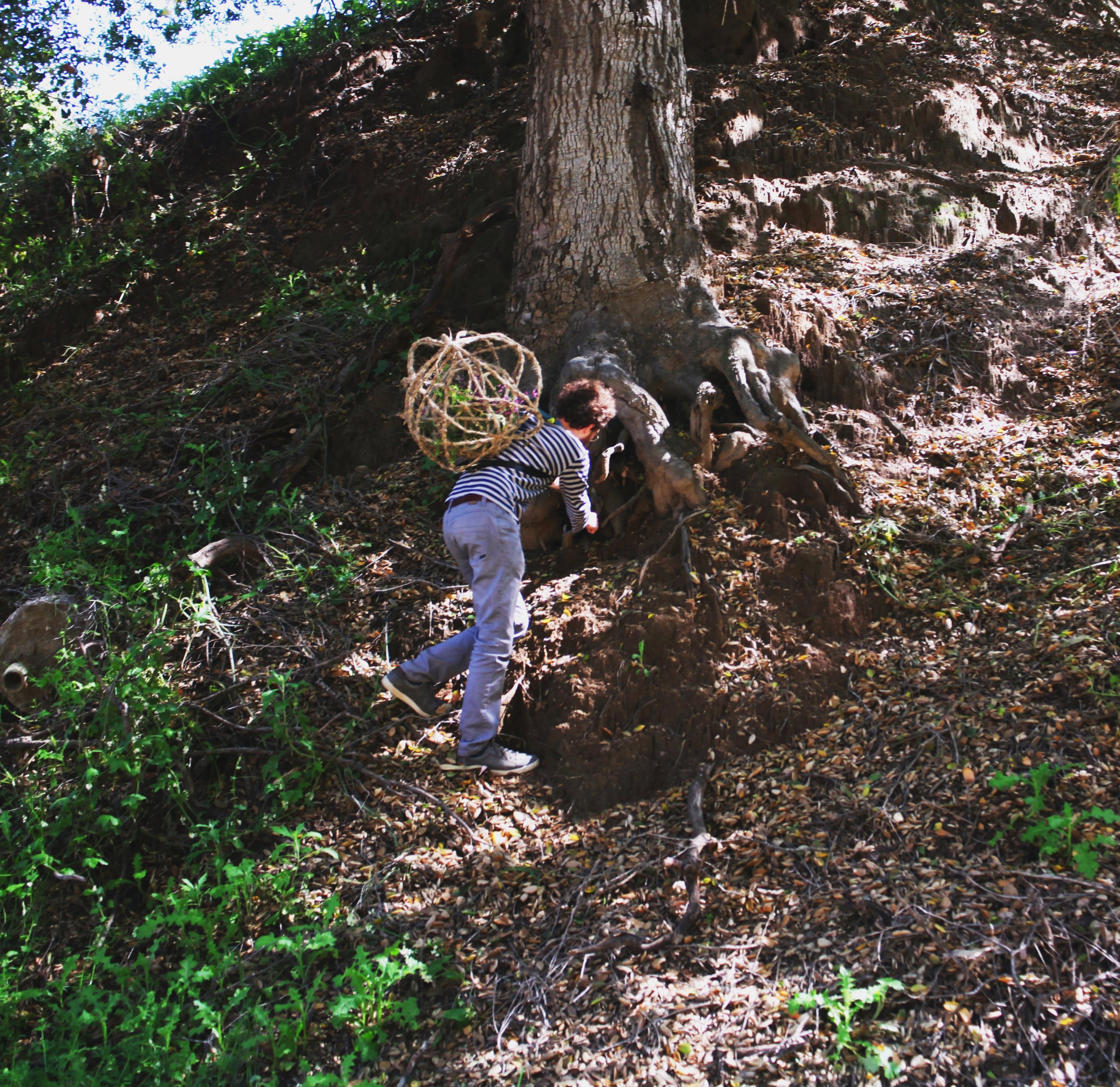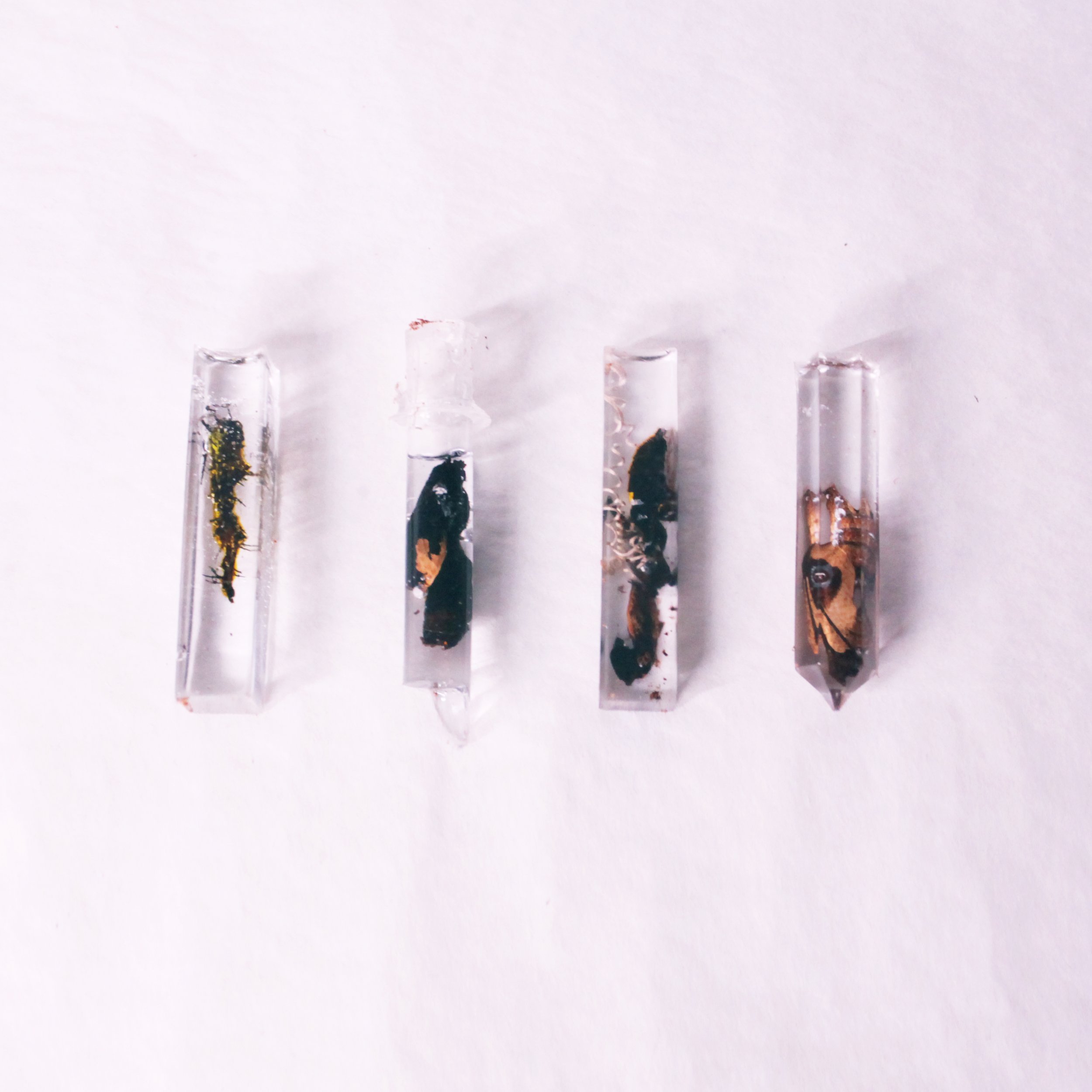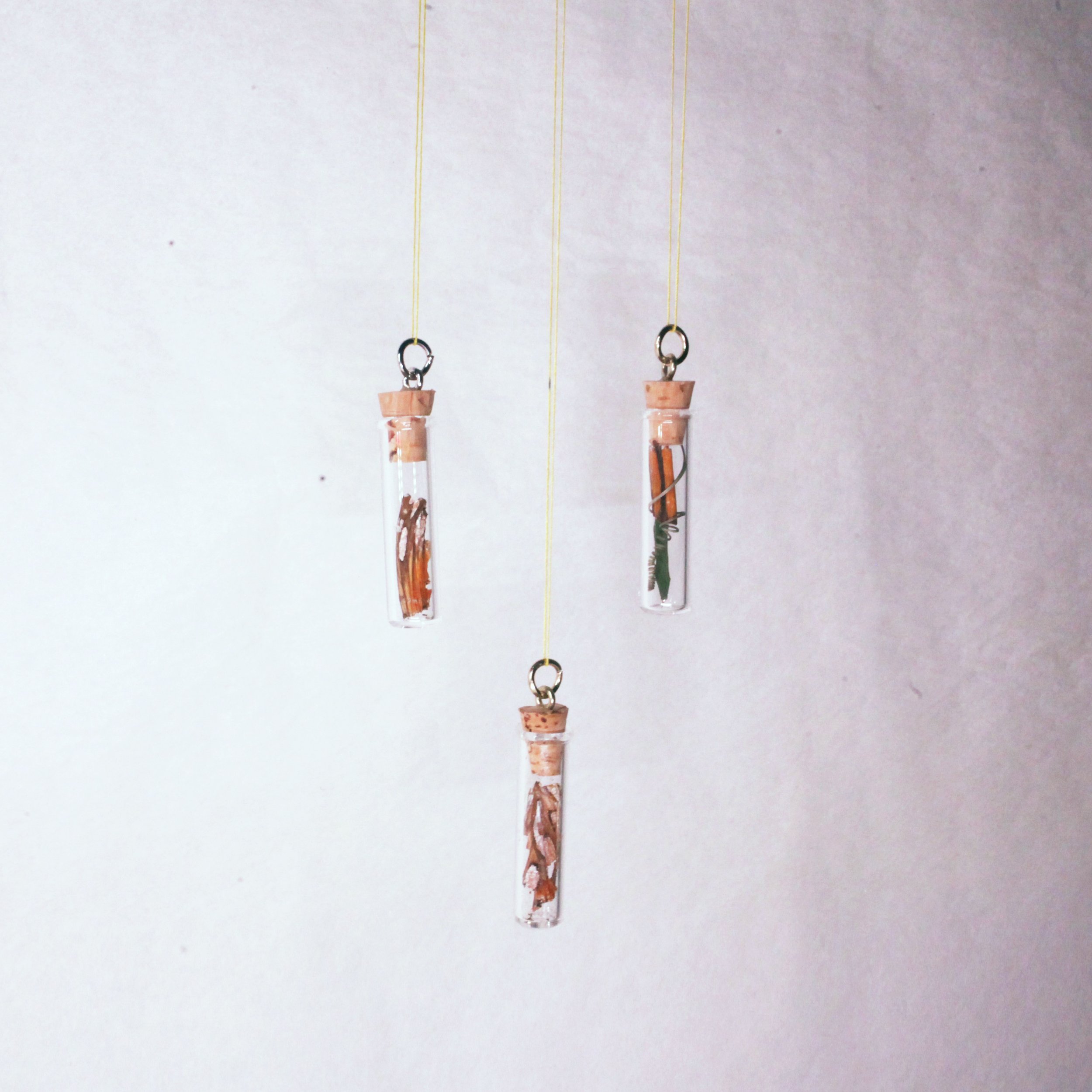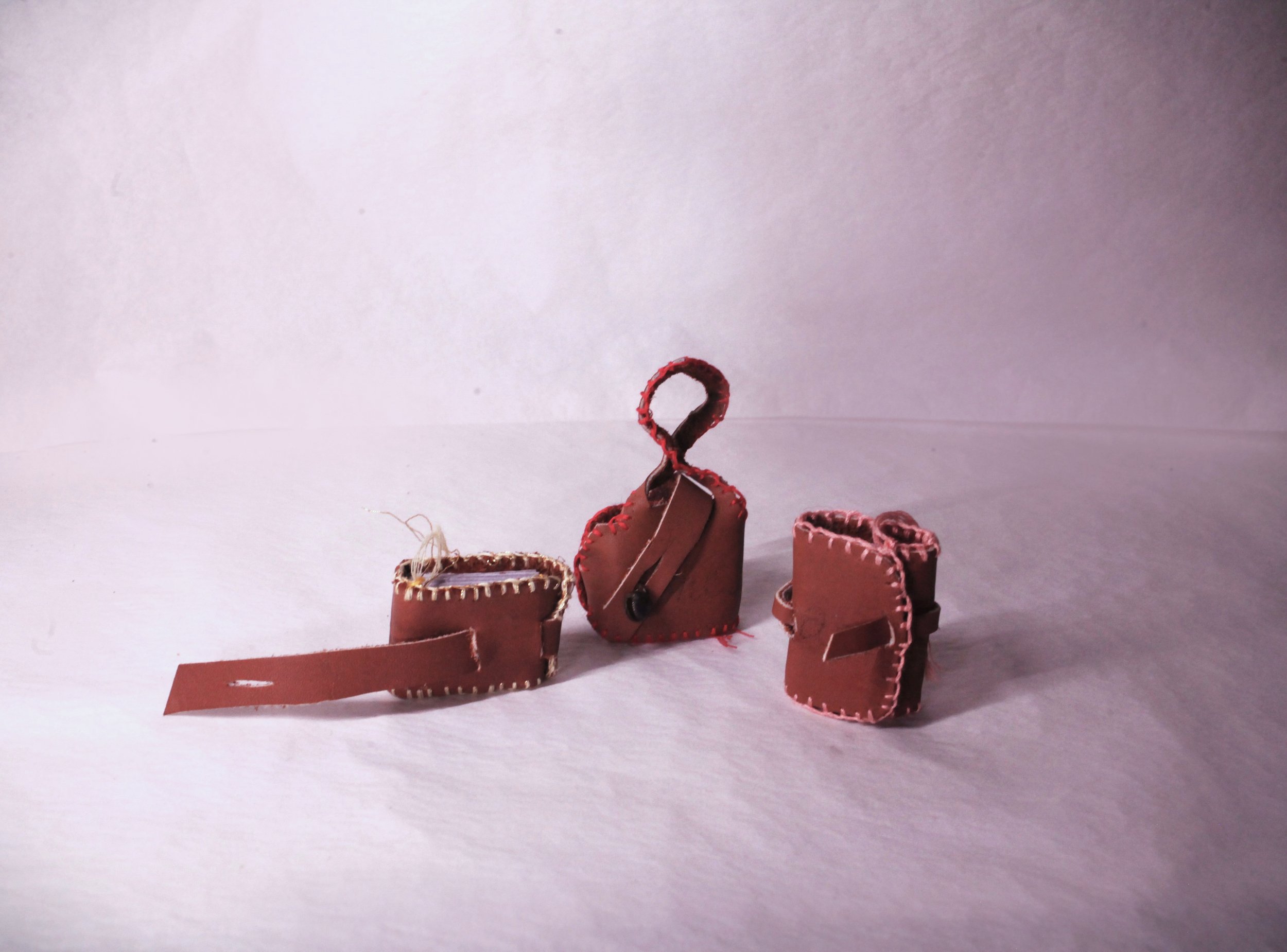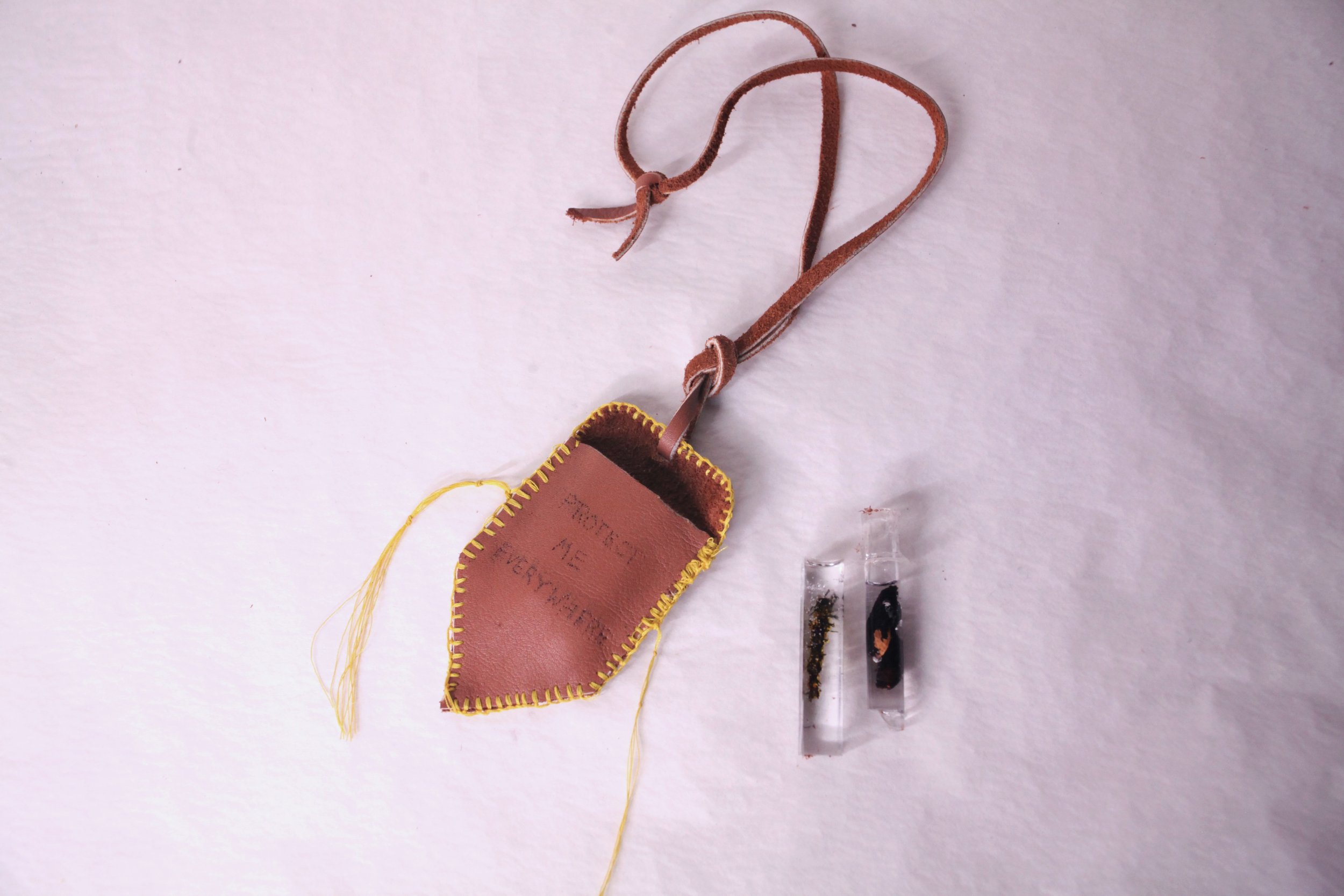A 2 part series on the Western Monarch Butterfly Migration by Eleanor Qull.
Episode 1: COLLECTIVE KNOWLEDGE • Eleanor scours the internet for answers to her many questions. Results vary.
Episode 2: AUDIO TOUR • Eleanor creates a 6-part audio tour for the Western Monarchs, encouraging them on their annual migration. In the process, she creates several objects as souvenirs and offerings.
• STOP #1 RIVER FORK RANCH •
“…What are ways we can all take care of where we live? On a small level in terms of individual choices, but also like what we hope our community looks like and how our community functions and really, you know trying to collectively work together to make it like, as healthy of a place as possible.” - Lori Leanord
• STOP #2 MOUNTAIN TOP ROOST – SIERRA NEVADA •
We only see them when they are flapping around on the ground gathering nectar – which is highly calorically inefficient. When they migrate they travel higher – you may see them soaring alone or, less often now, in a spotted sparse cloud above you. I asked Dr. Chip Taylor about their limits who said “We don’t know how high they can actually go.”
Above: Butterfly Backpack habitat: modeled by Theo, who also composed much of the music in this series.
• STOP #3 BUTTERFLY WING REPAIR STATION, FOOTHILLS WEST SIERRAS •
“I’m from Logar (Afghanistan) where it’s like kinda south of Kabul, the capital city. So we have 4 seasons. In Winter there are no butterflies but in springtime right where Winter ends, they come out and then each season has different butterflies. But the spring one was the ones we’d use for makeup. we’d all go for hunting. and I was so good at taking them. We’d hold them and then take their color and put in our eyes to do the makeup. And then the sharper your makeup was, the more strong you were to catch like more butterflies. And I was making sure that my makeup was like really good.” - Storai Stanazai
• STOP #4 GRAVEYARD •
Since ancient times the winged butterfly was a symbol for the human soul. In different cultural manifestations they were both the soul itself and the souls of the dead. — In Ancient Egypt “"the butterflies were presumably one of the pleasures that awaited the deceased in the afterlife, reflecting the Egyptian belief in the immortality of the human soul" [Manos-Jones] In Ancient Greece they were given the name “psyche” by Aristotle, the Greek word for soul.
The Aztecs believed that the happy dead in the form of beautiful butterflies would visit their relatives to assure them that all was well. These butterflies flew around the house and around bouquets of flowers which were carried by Aztec men of social rank. It was considered ill-mannered to smell a bouquet of flowers from the top. It should always be sniffed from the side, for the top was left for the souls to visit, where they could enjoy the fragrance thus reserved especially for them [Native-Cherry].
Native South Americans also integrated various Lepidoptera into their mythologies. To the Goajiro of Columbia, if a particular large, white moth is found in a bedroom it must not be mistreated for it is the spirit of an ancestor come to visit. If the moth becomes troublesome, it can be removed only with the greatest care or the spirit may take vengeance. Among the Aymara of Bolivia, a certain rare nocturnal moth was thought to be an omen of death.
• STOP #5 SPACE •
The orbs sent to “colonize” Mars could not have been completed without the Monarch butterfly. Vastly extending the scope of their migration, from North to South, (Eastern Monarch), and North East to West, (Western Monarch), a new population emerged that added the Z axis to their historic migration.
• STOP #6 MONARCH SANCTUARY •
Eleanor Qull: "I read somewhere that the western monarchs have entered an extinction vortex. Um, do you think that's that's true?"Chip Taylor: "It's absolutely not true…in the fall before this last one, they only had 1800 butterflies counted at all the overwintering sites. And there were a whole lot of articles saying, it's doomed. I thought the whole population was doomed."And they were much below the extinction threshold. I mean, there's no way 1,800 butterflies can sustain the population, 1800 butterflies, a lot of them die during the winter. Only about 45% of 'em are female. A lot of those would die. You'd come out of the winter with say, 400 female butterflies to reestablish the population. How could you possibly do that?“And then that fall that followed that 247,000 monarchs were counted at the overwintering sites. There's no way that 400 surviving females could produce 247,000 butterflies. The problem here is that we didn't know where they were."“...I mean, there are big gaps in what we know about what's going on in the west, especially in these winters now, because the winters now are so much warmer than they were in the past that it seems to be changing the behavior...”When we take an accounting of everything we have lost, every animal one by one, and when we fix those direct causes, it’s like medieval medicine – treating each symptom as a distinct disease not a part of a whole.
•
Perhaps there is nothing I can personally do to support the migration and all the Rube Goldberg machines, cloaks, seed canons and shrieking at butterflies are counterproductive. But pilgrimages like this, celebrations, I like because they have a different purpose. My faith is tangible in the works I make – maybe (definitely) my works should pay more mind to efficiency or effectiveness – less rube Goldberg machines and costumes, more calling graveyards to plant milkweed, or connecting with other causes such as river restoration since monarchs tend to follow riparian corridors, or f—k it, calling members of congress, because maybe nothing we do accumulates to anything but at the same time the stunning paradox is that we are all necessary.
Music:
Several tracks from Theo
Special thanks to Tsippora Sidibé from Tant Que Je Serai Noir for lending her voice in Episode 1 (Collective Knowledge).
Featuring:
Dr. Chip Taylor • Monarch Watch
Laurie Leonard • River Fork Ranch
Storai Stanizai
CREATED ART PIECES:
Space ship render
Helicopter pad render
Resin butterflies
Little books
Scapular pouches
Gunbelt on butterfly
Butterfly backpack
Works Cited:
Inclusion images:
Butterflies emerge in space
Research Gate / Antenna 36(4): 239–246 • Elizabeth Denyer’s paintings of William Jones’ British butterflies… • 2012 Sonya Drimmer and R.I Vane-Wright
Monarch Joint Venture: nonprofit partnership • Migration – How do they do it? • 2014 Candy Sarikonda
PNAS Nexus • Phylogenomics reveals the evolutionary timing and pattern of butterflies and moths • 2019 Akito Y. Kawahara
The Nature Conservancy • Monarch Butterflies Bring Together Conservation and Culture between U.S. and Mexico: Preserving the monarch butterfly and its unique migration across North America protects a cultural icon • 2017
Nature 574 • Genome editing retraces the evolution of toxin resistance in the monarch butterfly • 2019 M. Karageorgi
Cambridge Butterfly Conservatory • All about Butterflies • 2002 - 2023
Youtube – ibiology channel • Steven Reppert (UMass) Part 1: Neurobiology of Monarch Butterfly Migration: Migration Overview 2015 Part 1: https://www.youtube.com/watch?v=c9fhf4D58L0&ab_channel=iBiology Part 2: www.youtube.com/watch?v=QEzP3KiqtmU&t=570s Full Article: https://pubmed.ncbi.nlm.nih.gov/26473314/
Wild Center • Monarch Butterfly Conservation: the challenges ahead • Dr Chip Taylor 2013
Maryland Nature, Bioserve, NHSM Lepidopterist Club • Butterflies in Space • Stefanie Countryman 2021
The Xerces Society for Invertebrate Conservation 2006-2023
The Atlantic • Scientists can now repaint butterfly wings • Ed Yong • 2017
The Atlantic • The Butterflies that hear with their wings • Ed Yong • 2018
The Atlantic • What America Lost When It Lost the Bison • Ed Yong • 2019 // Full article: https://www.pnas.org/doi/10.1073/pnas.1913783116
NASA / Bioserve • Butterflies in Space • 2009
Journey North: Tracking Migrations and seasons • Monarch Butterflies: Male or Female?
Journey North: Tracking Migrations and seasons • Monarch Butterflies Life Cycle Dr. Karen Oberhauser
Western Monarch Milkweed Mapper • Western Monarch Biology: Monarch Life Cycle
Monarch Waystations Soundmap • Monarch Waystation Soundmap • Alejandro Botijo • 2020-2022
The Nature Conservancy • Monarchs, Danaus plexippus (L.) (Lepidoptera: Nymphalidae), of Central Nevada’s Carson Valley Area •Patricia F Neyman • 2018
Canterbury Tales • Geoffrey Chaucer • 1387 - 1400 (Book)
Library of the Philosophical Research Society, Los Angeles • Spirit of Butterflies: Myth, Magic and Art • Maraleen Manos-Jones • 2000 (Book)
Malleus Maleficarum (Hammer of Witches) Heinrich Kramer (Henricus Institor) 1487 (Book)
L’Estoire del Saint Graal (The Story of the Holy Grail) 1200-1250
Adirondack Almanack • Winged with Hope: Fixing broken monarch wings • Jackie Woodcock • 2020
Organizations with further Monarch Information:
Xerces Society
Journey North
Tags, Topics and Mentions: Butterfly, Monarch Butterflies, Butterfly Migration, Western Monarch Migration, Dr. Chip Taylor, Monarch Watch, Nature Conservancy, Genoa Nevada, River Fork Ranch, Jobs Peak, Sierra Nevada, Butterflies in Nevada, Cory Mcabee, I_Butterfly, Where is the Western Monarch Migration, questions for butterflies, butterflies for makeup, butterfly backpack habitat, helicopter pad for passing butterflies, butterfly gunbelt, how to build milkweed seed canon to spread large amounts of seed for butterflies, milkweed, sleepy transformation, WESTERN MONARCH